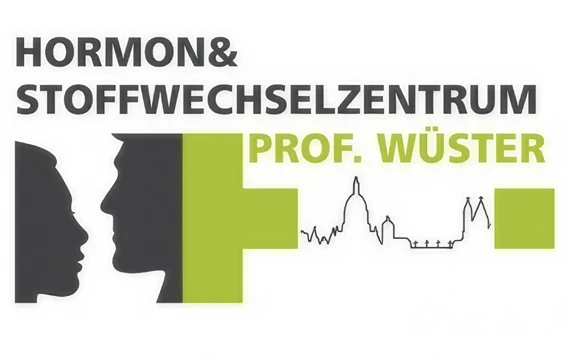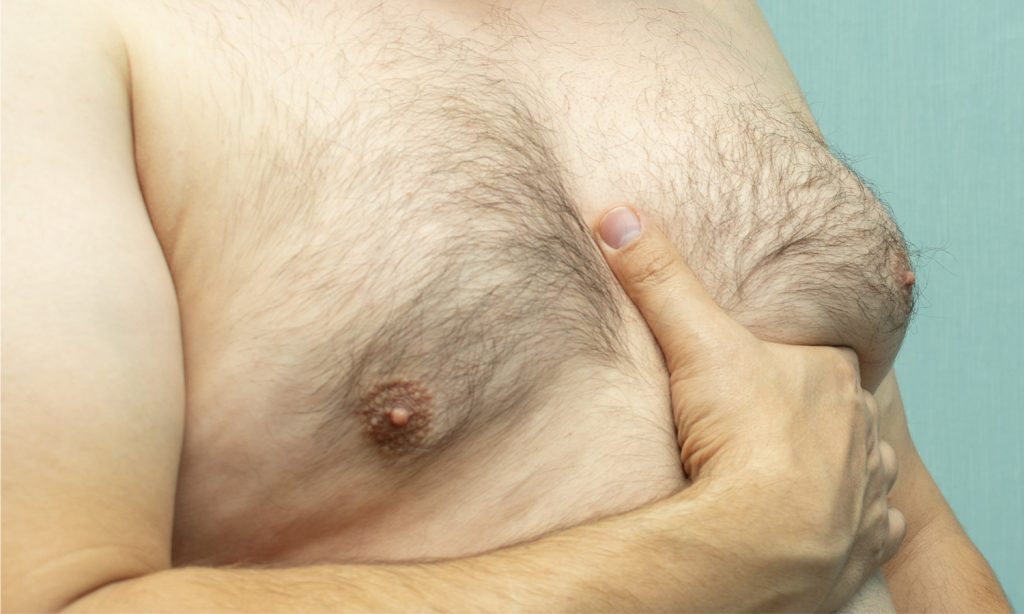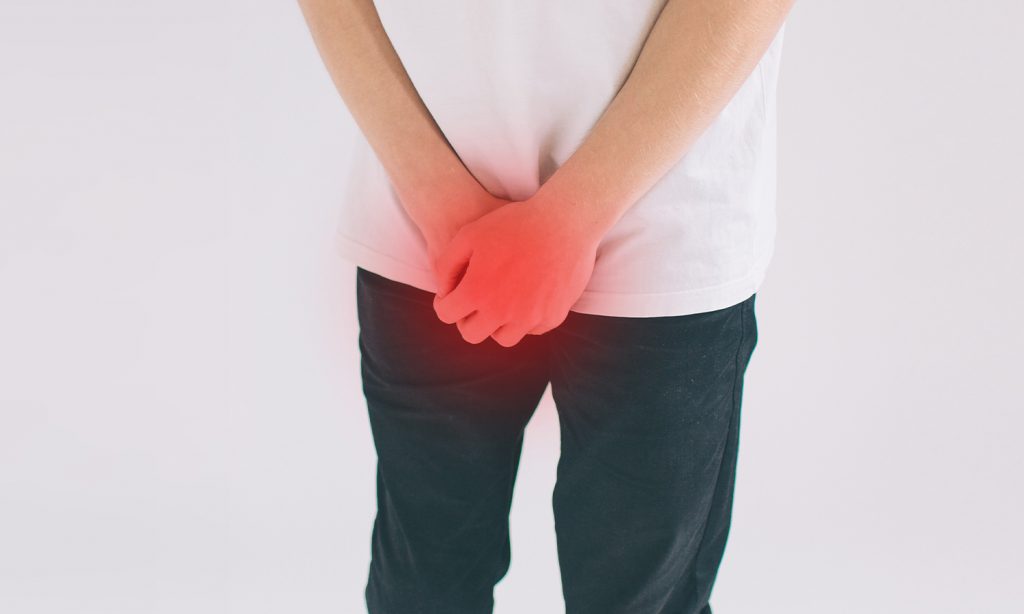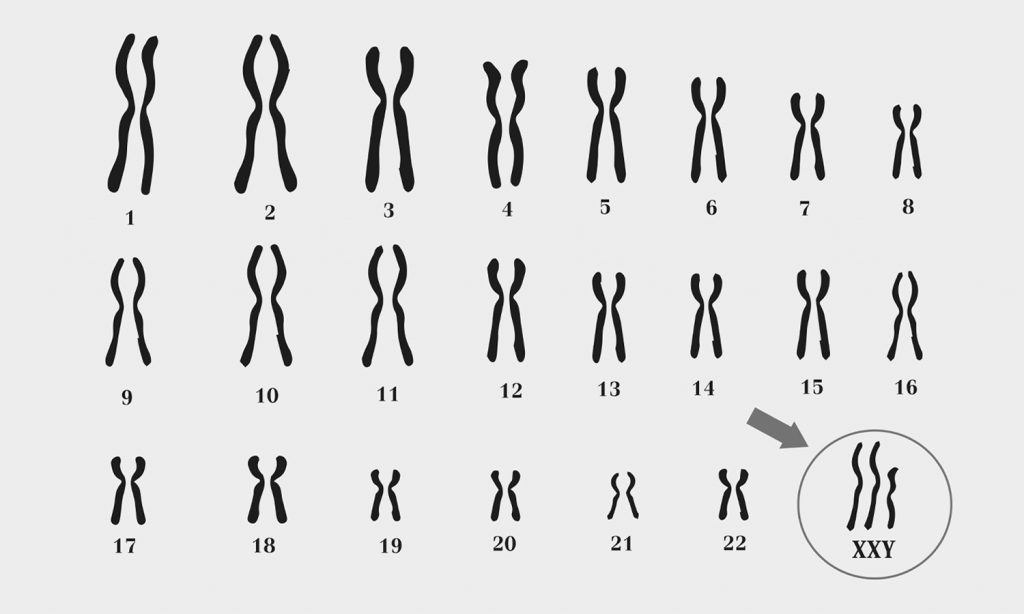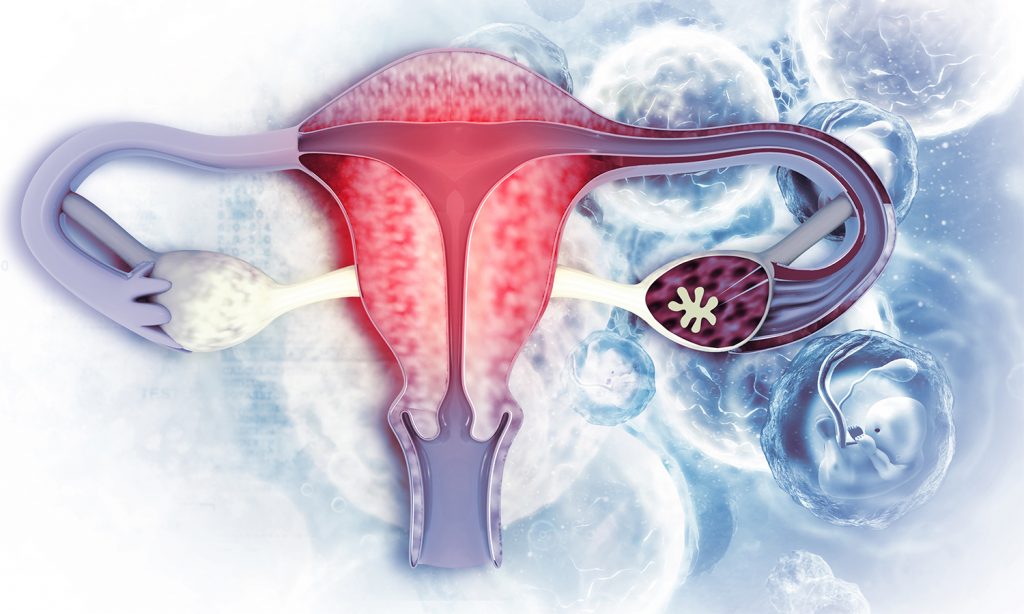Sex hormone disorders
Different characteristics are possible
Hypogonadism
This type of “feminization” is characterized by a deficiency of testosterone in males. Primary hypogonadism results from testicular damage, and secondary hypogonadism results from insufficiency of the anterior pituitary gland. Symptoms are the “feminization” of the male: lack of beard growth, decrease in muscle and bone mass (osteoporosis), anemia and the development of a so-called male breast.
The male breast does not degenerate – unlike male breast carcinoma. Gynecomastia results from estrogen stimulation of the normal mammary gland tissue. This is often congenital and must be surgically removed. If a hormonal disorder underlying the male breast is found, it can be treated. As a result, the “visible symptom” also disappears. Gynecomastia can also be caused by medication – especially in older men who take spironolactone.
Klinefelter syndrome
During puberty, the disorder can be diagnosed by changes in psychological development, undescended testis (hypospadias), and/or tall stature. In adulthood, patients have symptoms such as hypogonadism, gynecomastia, anemia, osteoporosis, oligo-/azoospermia, infertility, testicular damage, diabetes (type 2), obesity, thrombosis, epilepsy, and/or depression.
Cycle disorders (amenorrhea/oligomenorrhea)
There are many causes: stress, thyroid, pituitary and/or ovarian disease, cancer, medication, discontinuation of the pill, premature menopause. The consequences of ovarian insufficiency include hot flashes, mood swings, listlessness, vaginal dryness, infertility and osteoporosis. Diagnosis is made by hormone tests, ultrasound and/or MRI. Depending on the symptoms, hormone replacement, contraception and/or ovarian function stimulation are used.
Sex hormone disorders – clarification at Hormone and Metabolism Center Prof. Dr. Dr. Wüster
